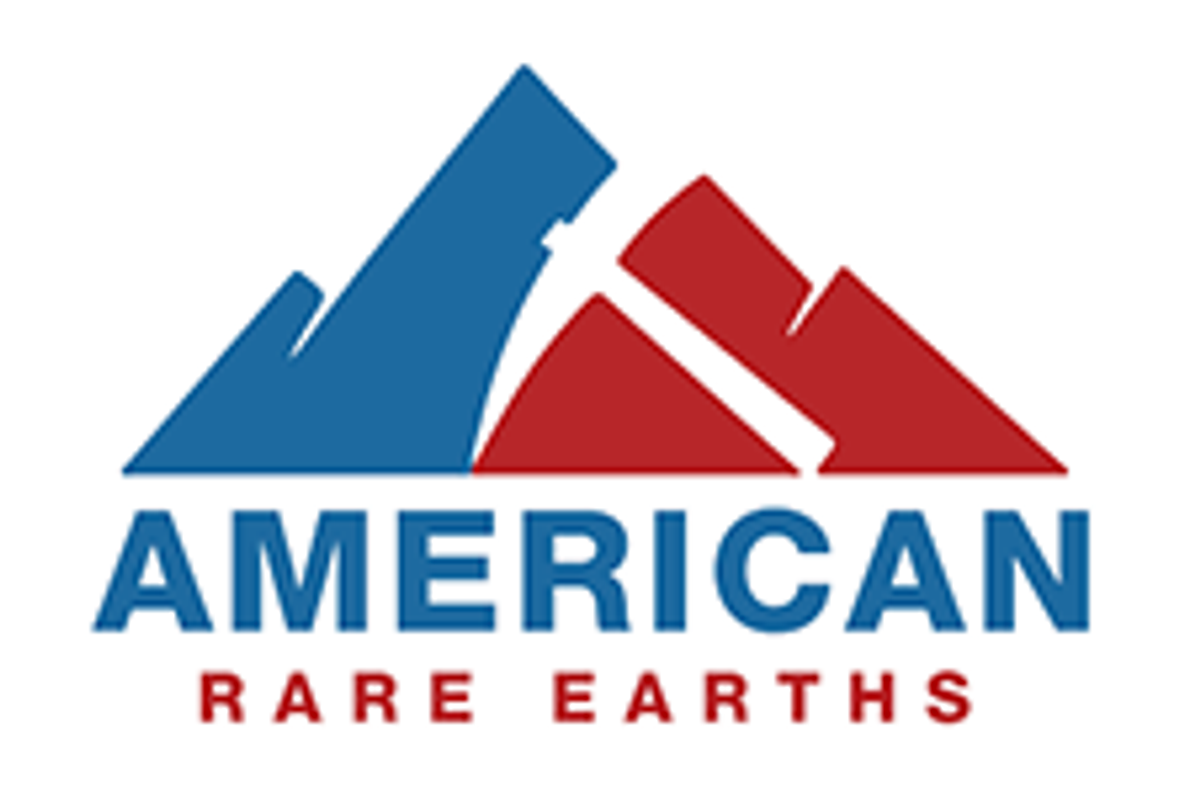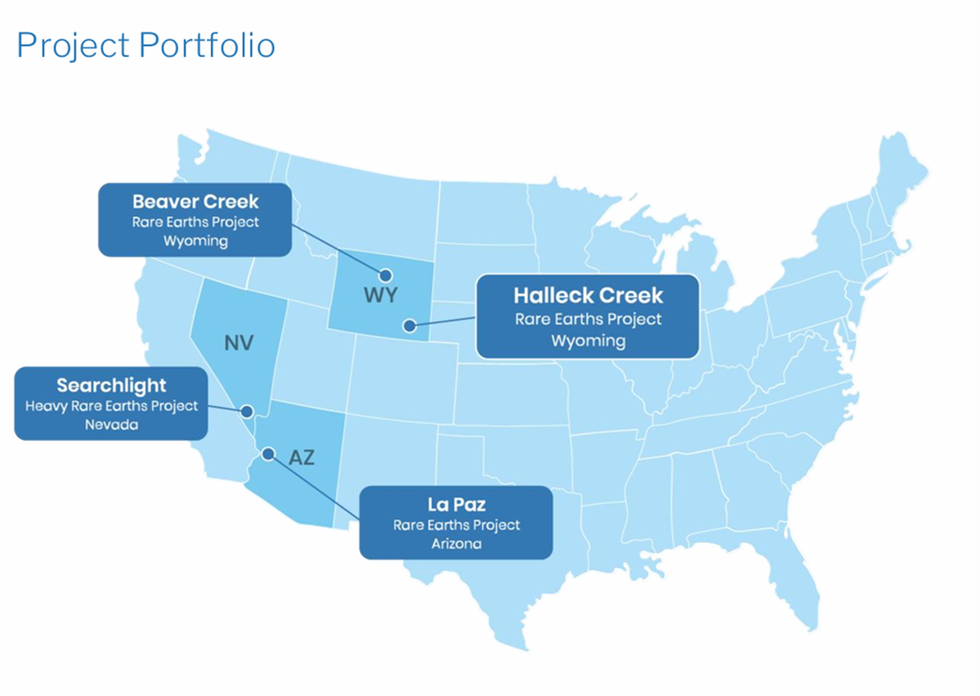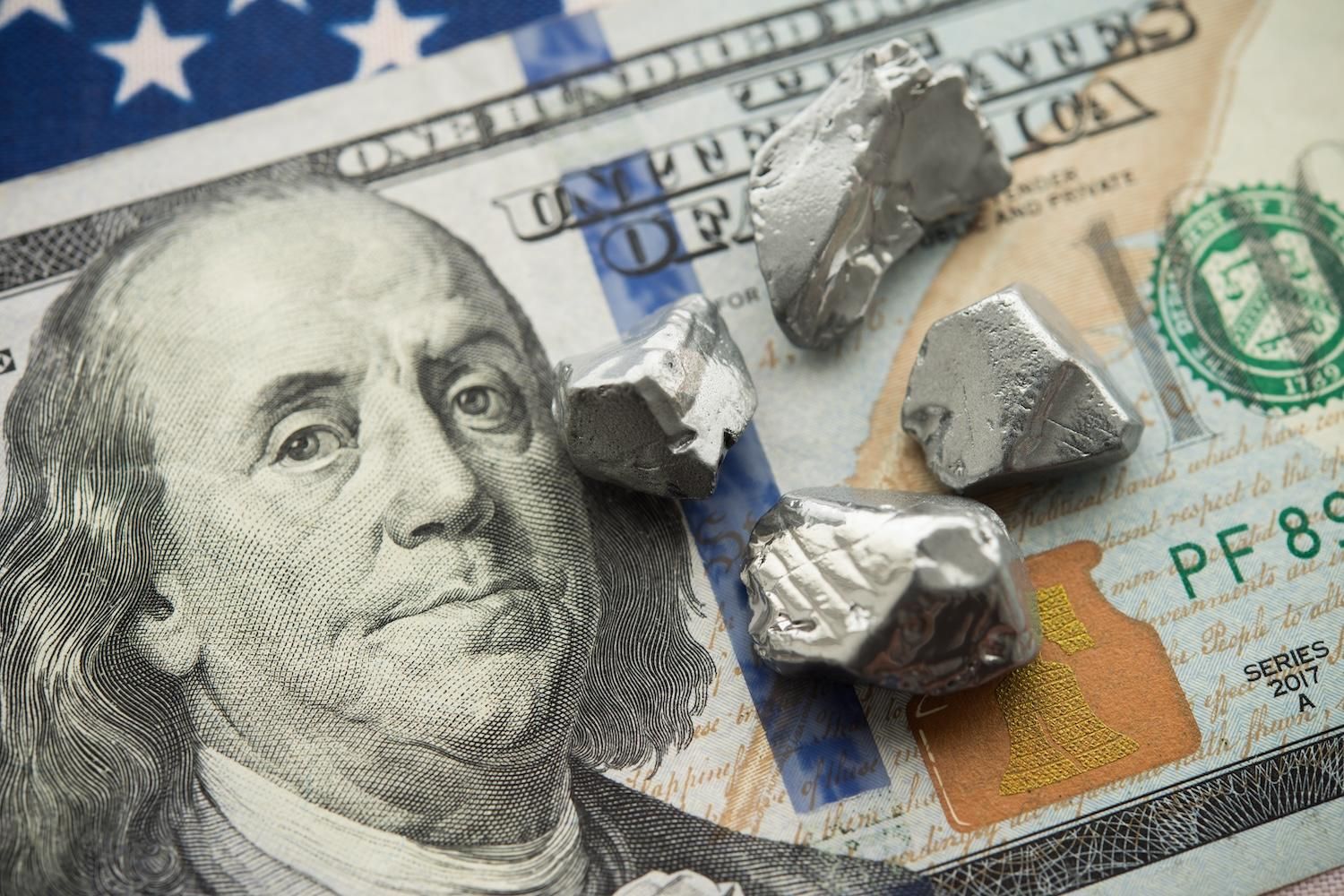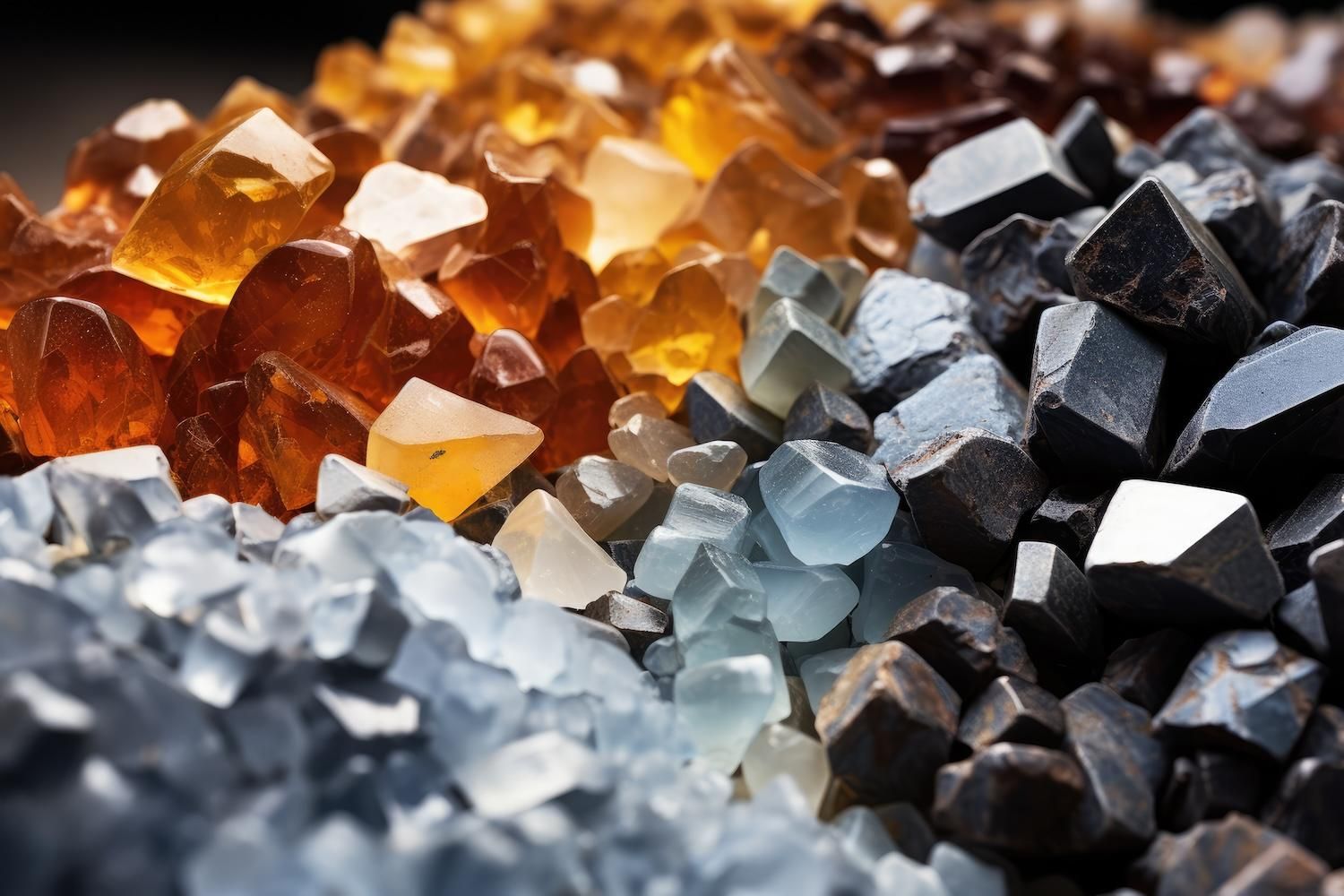
February 13, 2025
American Rare Earths (ASX:ARR,OTCQX:ARRNF,ADR:AMRRY) unlocks the USA’s rare earths potential through its strategic, high-value asset in Wyoming. The flagship project, Halleck Creek, is one of North America’s largest REE deposits. With a 2.63-billion-ton JORC resource at 3,292 ppm TREO, American Rare Earths is ramping up its development to bolster the North American critical minerals supply chain.
Halleck Creek offers significant exploration upside, presenting a multi-generational opportunity to establish a sustainable rare earths supply chain in the US. The support from EXIM Bank further highlights the strategic importance of Halleck Creek in reducing U.S. dependency on foreign suppliers.
 Key Projects
Key ProjectsThe Halleck Creek project in Albany County, Wyoming, is the cornerstone of ARR’s growth strategy. Recognized as one of the largest, rare-earth deposits in North America, it boasts a JORC-compliant resource of 2.63 billion tons at 3,292 ppm TREO. The deposit is hosted in Precambrian granites and metamorphic rocks, which contain REE-enriched minerals like monazite and bastnaesite. The coarse-grained nature of the mineralization ensures cost-effective extraction and processing.
Company Highlights
- American Rare Earth’s flagship project, Halleck Creek, is one of North America’s largest REE deposits. With a 2.63-billion-ton JORC resource at 3,292 ppm TREO, it holds the potential to meet US rare earths demand for approximately 100 years.
- The company is completely focused on developing a US-based critical minerals supply chain, aligning with US policies to reduce reliance on China for rare earth supply.
- The Halleck Creek project’s planned development consists of two phases. Phase 1 entails development of the Cowboy State mine, which is located entirely on Wyoming state land, enabling faster permitting and streamlined regulatory processes. Subsequently, cash flow generated from CSM will support development of the federal portions of Halleck Creek in Phase 2.
- This phased approach allows ARR to accelerate its pathway to production, enhance shareholder value, and strengthen its position as a key domestic supplier of rare earth elements in the United States.
- Well-positioned to address critical supply chain vulnerabilities, Halleck Creek benefits from strong federal and state support, including a non-binding EXIM Bank letter of interest for funding up to $456 million.
This American Rare Earths profile is part of a paid investor education campaign.*
Click here to connect with American Rare Earths (ASX:ARR) to receive an Investor Presentation
ARR:AU

Sign up to get your FREE
American Rare Earths Limited Investor Kit
and hear about exciting investment opportunities.
- Corporate info
- Insights
- Growth strategies
- Upcoming projects
GET YOUR FREE INVESTOR KIT
The Conversation (0)
12 February
American Rare Earths Limited
Advancing one of the largest REE deposits in North America
Advancing one of the largest REE deposits in North America Keep Reading...
12h
Rare Earths Oxide Produced from Halleck Creek Ore-Major Technical Breakthrough
American Rare Earths (ASX: ARR | OTCQX: ARRNF | ADR: AMRRY) (“ARR” or the “Company”) has successfully completed another critical stage in its mineral processing program by producing a mixed rare earths oxide (“MREO”) using the updated preliminary PFS mineral processing flowsheet. HighlightsRare... Keep Reading...
19 November
Mineral Resource Estimate Updated for the Cowboy State Mine Area at Halleck Creek
American Rare Earths (ASX: ARR | OTCQX: ARRNF | ADR: AMRRY) (“ARR” or the “Company”), is pleased to announce an updated Mineral Resource Estimate for the Cowboy State Mine area within its flagship Hallack Creek Rare Earths Project. The update incorporates the results from 18 additional channel... Keep Reading...
09 November
Optimisation Update
American Rare Earths Limited (ARR:AU) has announced Optimisation UpdateDownload the PDF here. Keep Reading...
16 October
Quarterly Activities/Appendix 5B Cash Flow Report
American Rare Earths Limited (ARR:AU) has announced Quarterly Activities/Appendix 5B Cash Flow ReportDownload the PDF here. Keep Reading...
12 October
Successful Completion-Impurity Removal Neutralization Tests
American Rare Earths Limited (ARR:AU) has announced Successful Completion-Impurity Removal Neutralization TestsDownload the PDF here. Keep Reading...
15 December
ReeXploration Announces $1,000,000 Private Placement
Capital raise supports upcoming drill program targeting newly identified uranium system along Namibia's premier uranium corridorReeXploration Inc. (TSXV: REE) (FSE: K2I0) ("ReeXploration" or the "Company") is pleased to announce a private placement for aggregate gross process of up to $1,000,000... Keep Reading...
12 December
ReeXploration Announces Field Program Results Confirming Large-Scale Uranium Target at Eureka, Namibia
Ground radiometrics, soil geochemistry and mapping reinforce the potential for a Rossing-style system beneath shallow coverReeXploration Inc. (TSXV: REE) (FSE: K2I0) ("ReeXploration" or the "Company") is pleased to announce results from its uranium field program, which provide strong support for... Keep Reading...
09 December
Pensana Secures US$100 Million Investment for US Mine-to-Magnet Plan
Rare earths-focused Pensana (LSE:PRE,OTC Pink:PNSPF) reported on Tuesday (December 9) that it has concluded a US$100 million subscription with a strategic investor.According to the company, the deal underpins its broader mine-to-magnet strategy in the US.The unnamed investor subscribed for 95... Keep Reading...
07 December
U.S. Investors Lead Oversubscribed $17m Placement
Locksley Resources (LKY:AU) has announced U.S. Investors Lead Oversubscribed $17m PlacementDownload the PDF here. Keep Reading...
04 December
ABx Receives First Mixed Rare Earth Carbonate Sample from Deep Leads
ABx Group (ASX:ABX) said the Australian Nuclear Science and Technology Organisation (ANSTO) has produced the first mixed rare earth carbonate (MREC) sample from the Deep Leads resource in Northern Tasmania.A Tuesday (December 2) press release states that the ANSTO sample contains 4 percent... Keep Reading...
02 December
China Issues First Streamlined Rare Earth Export Licenses
China has reportedly issued the first batch of streamlined rare earth export permits since its implementation of a new rare earths licensing regime following the recent Trump-Xi summit.A source told Reuters that at least three firms now have “general licenses” allowing faster exports to some... Keep Reading...
Latest News

Sign up to get your FREE
American Rare Earths Limited Investor Kit
and hear about exciting investment opportunities.
- Corporate info
- Insights
- Growth strategies
- Upcoming projects
GET YOUR FREE INVESTOR KIT
Latest Press Releases
Related News
TOP STOCKS
American Battery4.030.24
Aion Therapeutic0.10-0.01
Cybin Corp2.140.00






